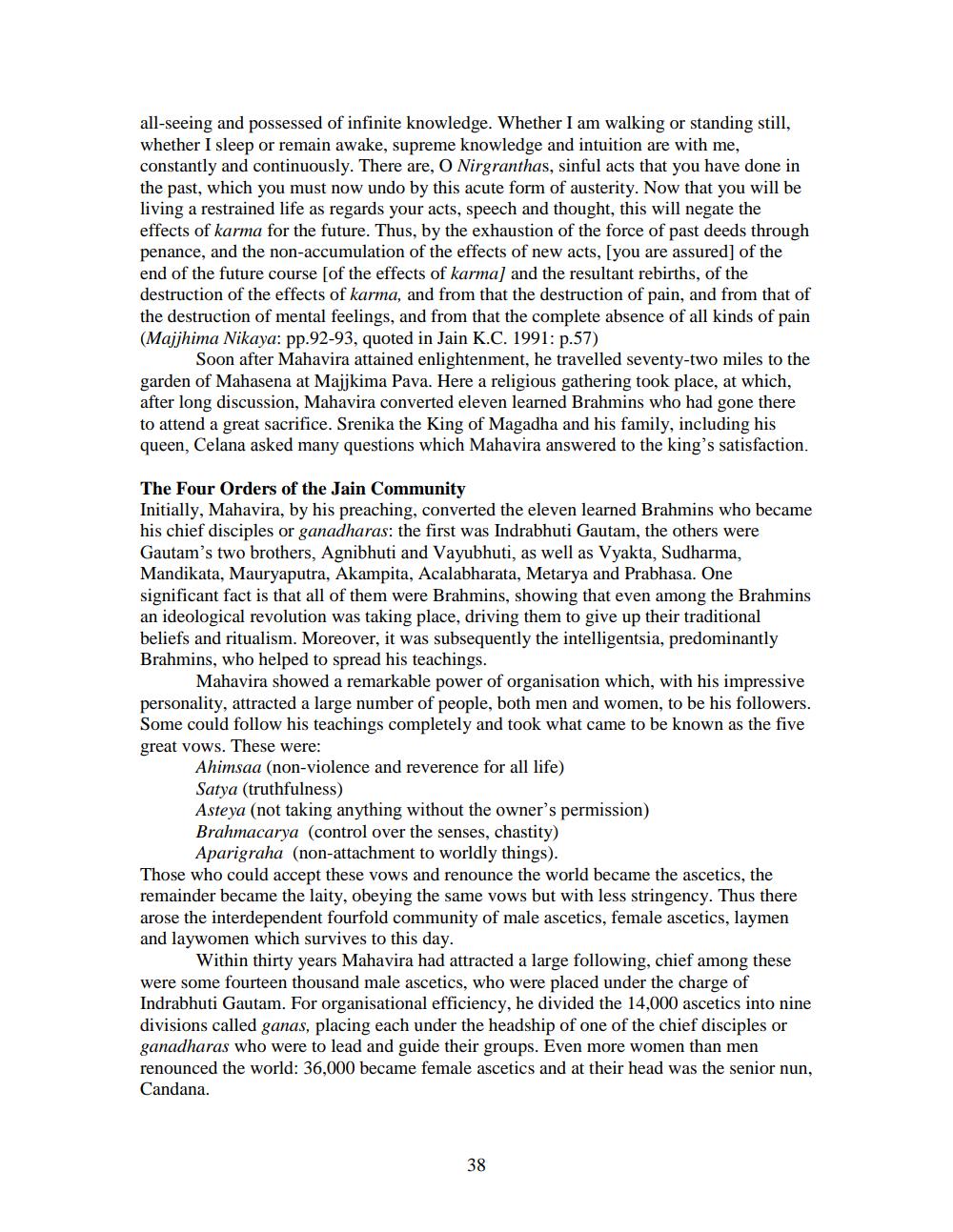________________
all-seeing and possessed of infinite knowledge. Whether I am walking or standing still, whether I sleep or remain awake, supreme knowledge and intuition are with me, constantly and continuously. There are, O Nirgranthas, sinful acts that you have done in the past, which you must now undo by this acute form of austerity. Now that you will be living a restrained life as regards your acts, speech and thought, this will negate the effects of karma for the future. Thus, by the exhaustion of the force of past deeds through penance, and the non-accumulation of the effects of new acts, [you are assured] of the end of the future course [of the effects of karma] and the resultant rebirths, of the destruction of the effects of karma, and from that the destruction of pain, and from that of the destruction of mental feelings, and from that the complete absence of all kinds of pain (Majjhima Nikaya: pp.92-93, quoted in Jain K.C. 1991: p.57)
Soon after Mahavira attained enlightenment, he travelled seventy-two miles to the garden of Mahasena at Majjkima Pava. Here a religious gathering took place, at which, after long discussion, Mahavira converted eleven learned Brahmins who had gone there to attend a great sacrifice. Srenika the King of Magadha and his family, including his queen, Celana asked many questions which Mahavira answered to the king's satisfaction.
The Four Orders of the Jain Community
Initially, Mahavira, by his preaching, converted the eleven learned Brahmins who became his chief disciples or ganadharas: the first was Indrabhuti Gautam, the others were Gautam's two brothers, Agnibhuti and Vayubhuti, as well as Vyakta, Sudharma, Mandikata, Mauryaputra, Akampita, Acalabharata, Metarya and Prabhasa. One significant fact is that all of them were Brahmins, showing that even among the Brahmins an ideological revolution was taking place, driving them to give up their traditional beliefs and ritualism. Moreover, it was subsequently the intelligentsia, predominantly Brahmins, who helped to spread his teachings.
Mahavira showed a remarkable power of organisation which, with his impressive personality, attracted a large number of people, both men and women, to be his followers. Some could follow his teachings completely and took what came to be known as the five great vows. These were:
Ahimsaa (non-violence and reverence for all life)
Satya (truthfulness)
Asteya (not taking anything without the owner's permission)
Brahmacarya (control over the senses, chastity)
Aparigraha (non-attachment to worldly things).
Those who could accept these vows and renounce the world became the ascetics, the remainder became the laity, obeying the same vows but with less stringency. Thus there arose the interdependent fourfold community of male ascetics, female ascetics, laymen and laywomen which survives to this day.
Within thirty years Mahavira had attracted a large following, chief among these were some fourteen thousand male ascetics, who were placed under the charge of Indrabhuti Gautam. For organisational efficiency, he divided the 14,000 ascetics into nine divisions called ganas, placing each under the headship of one of the chief disciples or ganadharas who were to lead and guide their groups. Even more women than men renounced the world: 36,000 became female ascetics and at their head was the senior nun, Candana.
38




